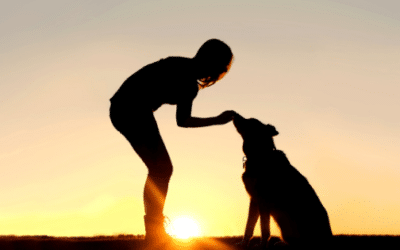Whether you got a new puppy for the holidays or you’ve adopted a dog in need of a home from your local shelter, chances are you’re looking for some quick and easy tips on how to train your new family member. Look no further! We’ve assembled out top 10 training tips below.
- Be Consistent
Consistency is probably one of the most important things when it comes to teaching anyone anything new, not just a new dog. Learning is achieved through identifying patterns, so if you’re teaching your dog one thing but your spouse is teaching them the opposite when you’re not home you’re never going to get the result you want out of training. For instance, if you’re trying to teach the dog not to jump but your husband is petting the dog and playing with them when they jump on him, your dog is getting mixed signals and won’t understand that the behavior is wrong.
- Provide Exercise
And mental stimulation, too. A bored dog is a trouble-making dog, and they are more likely to chew and stick their noses where it doesn’t belong. If you incorporate the proper amount of exercise into their daily life, they’ll be too tuckered out to get into the things you don’t want them to.
- Make a List
Having an idea of what you want you want to teach your dog will make the training process a whole lot easier. If you don’t know what you want them to do, they certainly won’t be able to figure it out either. This will lead to frustration for both of you, which is counterproductive when trying to teach your pup a new skill.
- Be Realistic
This is especially key for new puppy owners. The first thing a new puppy owner wants to do is housetrain their new furry friend, but many puppies cannot be fully housetrained and taught how to reliably go potty outdoors until they are seven to eight months old. If you go into training with the mindset that the behavior will be learned overnight, your setting yourself and your pup up for disappointment.
- Keep it Short
Many people think that each training session needs to be an hours long process, but this isn’t necessarily the case. Actually, you only need to have a few three to five-minute sessions over the course of the day. It’s more productive, and you’ll keep your dog motivated and looking forward to the next session.
- Be the Pack Leader
Dogs are pack animals, and it’s important for your dog to view you as the alpha dog in the house. When you’re training, it’s important to keep a few things in mind about your demeanor; you need to remain calm and focused, know the commands you want to teach and go through the stops with confidence. Stand up straight with eyes forward, if you’re hunched over and waiting for approval your dog can sense it. Most importantly, be a leader and make sure your dog is taking cues from you, not the other way around.
- Use Treats as a Reward
But make sure they are just that – a reward. Some people use them as bribery to get their dog to do what they want, and it’s important to remember that the behavior should produce the treat. If the behavior you’re trying to teach is only accomplished once the dog sees the treat in your hand, it’s time to start back at square one.
- Mealtime as a Training Opportunity
Dogs are very food motivated, and if you’re trying to correct behaviors such as jumping and overexcitement at dinnertime then that’s the perfect time to train them. If your dog gets rambunctious when the food dish is about to be put down, keep the dish in hand and turn your back to the dog. Once the dog calms down, try again. Keep doing this until the dog understands that they won’t receive the food until they behave in a calm manner.
- Be Positive
Your dog can sense when you’re frustrated or bored when training, and this will affect their attitude as well. If you feel like you’ve hit a wall and are unsatisfied with the progress being made, it’s ok to stop and try again tomorrow. Coming into a training session with good attitude and a new plan will make an impact on your dog and you’ll see better results.
- Don’t Be Afraid to Ask for Help
If you’re just not getting that hang of things or feel like the task of training is just more than you can handle, do not be afraid to contact a professional trainer. They’re there to help you reach the goals you have set for your pup and can answer any questions you may have.




Recent Comments